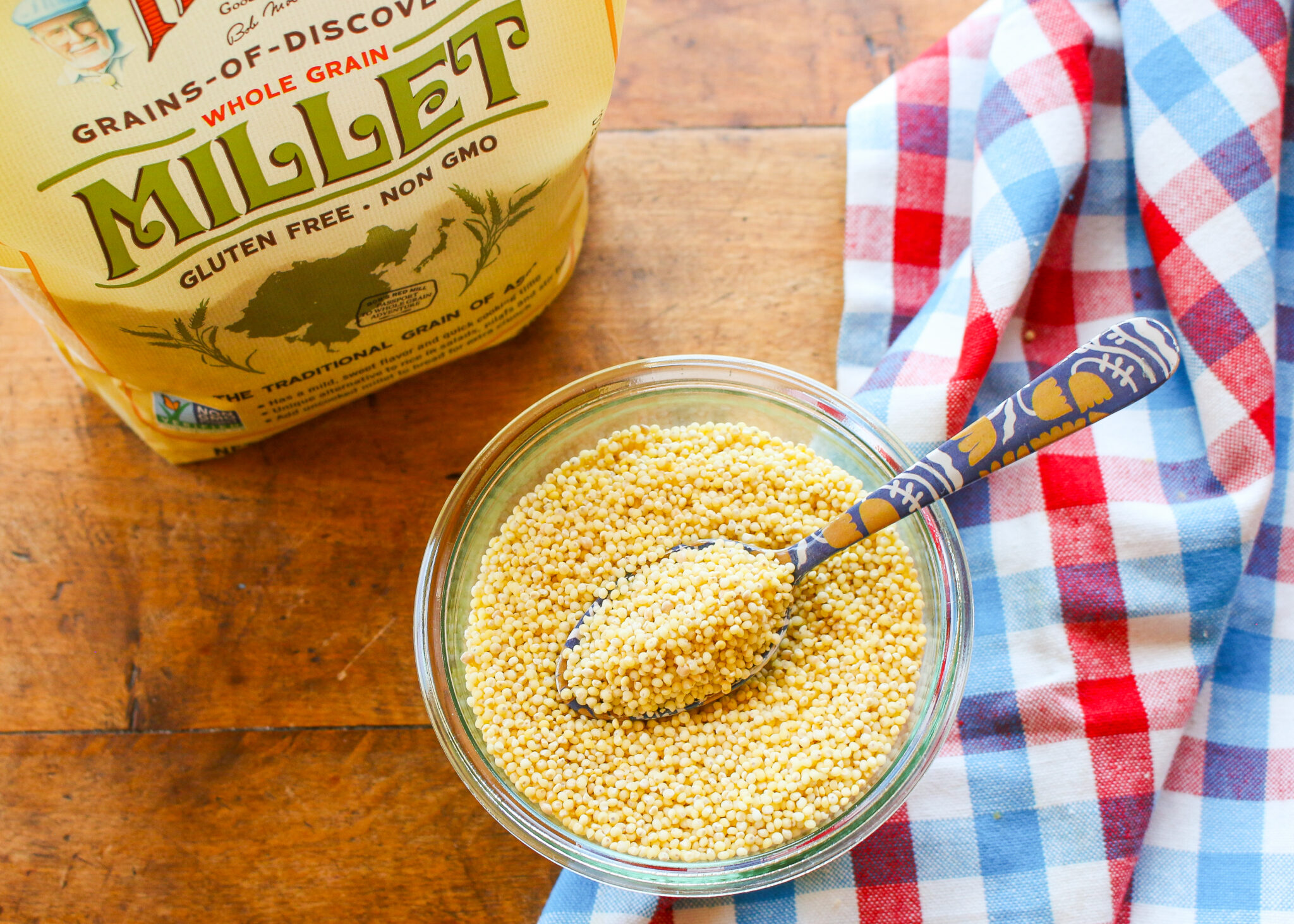What is millet? How to cook millet? Learn all about millet nutrition and cooking, as well as top millet recipes.
Millet may not be in most U.S. kitchen pantries today, but the popularity of this ancient cereal grain is gaining traction. First cultivated about 10,000 years ago in Asia and Africa, millet quickly became a food staple around the world. The Bible refers to it in bread making, the Romans ate it as porridge, and it was the prevalent grain in China before rice. Many countries’ cuisines include millet, such as flatbreads in India (roti and bhakri), porridges, and even beer and wine. Packed with nutrients, this quick-cooking grain is ready to forge its way onto the American plate.
What is Millet?
Millet is the generic name for over 6,000 species of grasses, but mostly refers to those of the Poaceae family, which are small seed grasses. Foxtail, finger, koda, and pearl (Pennisetum glaucum), the most widely grown, are among the most important species of millet, which can be white, gray, yellow, or red. Though classified as a grain from a culinary and nutrition perspective, millet is actually a tiny seed (as is the case in other grains), commonly used in birdseed and as animal fodder. However, millet is an important staple grain in human diets, too.

Millet Nutrition
In terms of nutrients, millet is hardly just for the birds! A cup of cooked millet–which is a naturally gluten-free grain, contains 12% DV (Daily Value, based on 2,000 calories/day) each of satiating protein and the B vitamins thiamin and niacin, which support metabolism. Millet is known to be rich in polyphenols, powerful health-promoting plant compounds. Kodo millet, in particular, was shown to have high levels of ferulic acid and cinnamic acid, antioxidants with antimicrobial action against harmful bacteria, according to research. Millet also shows potential for managing type 2 diabetes and its complications, including reducing fasting blood glucose, insulin, total cholesterol, LDL (bad) cholesterol, and triglyceride levels, according to scientific studies. Replacing a rice-based breakfast item with a millet-based item lowered post-meal blood glucose levels in patients with type 2 diabetes, according to one study in India.

Cooking with Millet
Millet is readily available online, in most health food and specialty markets, and, increasingly, in mainstream grocery stores. The millet grain is mainly sold hulled, as a whole grain, and as flour. Whether packaged or in bulk containers, be sure millet is stored free of moisture. Sealed in an airtight container, it will keep in a cool, dark, dry place for several months. Millet is a versatile, mild-flavored grain which can be enjoyed in multiple dishes.
To cook millet, place water (2 cups of water for every 1 cup of dried millet) in a pot and bring to a boil. Cover, simmer for 15 minutes on medium heat, turn off the heat, and let it sit until all of the water has evaporated. Fluff with a fork and enjoy!

Top 5 Ways to Use Millet + Millet Recipes

1. Use in Place of Any Grain
Millet is extremely versatile and can be used in place of almost any grain in dishes, including porridge, salads, grain bowls, side dishes, soups, and stews. For example, it can be used in tabbouleh as a replacement for bulger to make it gluten-free (bulgur which is traditionally used in tabbouleh is made from wheat and contains gluten).

2. Make Into a Breakfast Porridge
Just cook up millet in a pot with water or plant-based milk, your favorite seasonings (i.e., cinnamon, cardamom, ginger), seasonal fruits, nuts and seeds. Try the recipe for Shredded Coconut Banana Millet Breakfast Grain Bowl to get started.

3. Bake it in Breads, Cookies, Cakes, or Muffins
Mild, gluten-free millet flour creates nice, fluffy, and slightly sweet baked goods, including breads, cookies, cakes, or muffins, especially in my recipe for Blueberry Millet Muffins.

4. Create a Hearty Grain Bowl
Line your bowl with cooked millet and build it into a fabulous, satisfying, nutritious grain bowl with your favorite lean protein, veggies, and flavorful sauce. Try this recipe for Burrito Millet Grain Bowl as inspiration.

5. Add to Granola
Millet is a wonderful addition to any granola recipe. You can mix ¼ to ½ cup dry millet into your favorite granola recipe, along with oats, dried fruit, and nuts, then roast it in the oven as usual (roasting millet gives it a nice sweet taste, similar to toasted corn).
For other Plant 101 Cooking and Nutrition Guides, check out the following:
As an Amazon Influencer, I earn from qualifying purchases. For more information about affiliate links, click here.
Publisher: Source link








